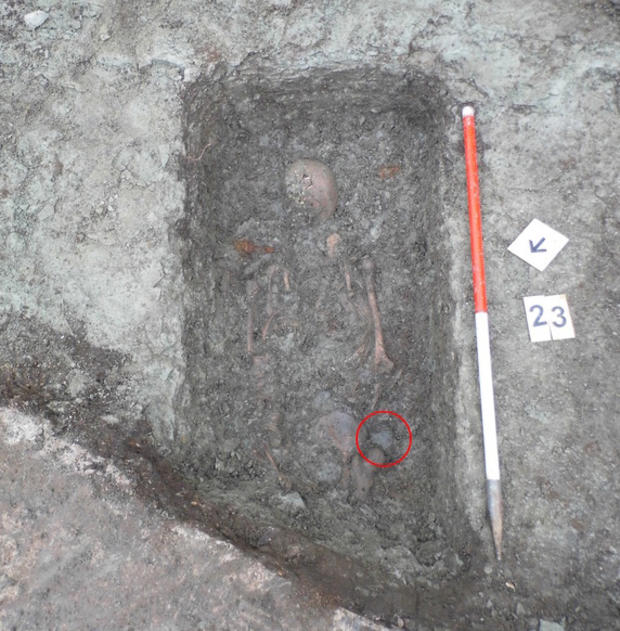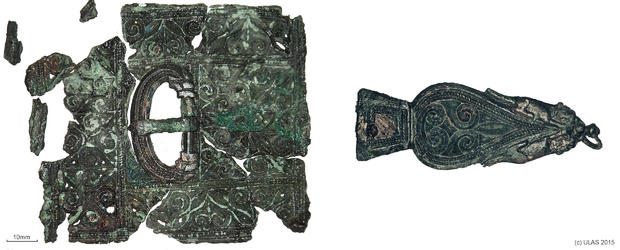Ancient Roman grave, artifacts unearthed in England
The 1,600-year-old remains of a middle-age man buried alongside an ornate belt decorated with images of dolphins and dogs have been found in a grave in Leicester, England, archaeologists report.
The belt's style suggests that its owner worked as a solider or civil servant during the Late Roman period, during the second half of the fourth century A.D or the early fifth century A.D., the archaeologists, from the University of Leicester Archaeological Services (ULAS), said on July 7.
The team made the discovery during an excavation in which they dug up 83 skeletons from a Late Roman cemetery in Leicester's West End. One of the graves, a simple one dug into mudstone by the bank of the River Soar, held the middle-age man's remains, as well as the extraordinary belt. [In Photos: The Ancient Roman Baths of Bath, England]
Rare find
The cemetery is located southwest of an ancient Roman town and close to what was once a major Roman road known as Fosse Way. But despite Rome's extensive settlements in England, it's rare to find such an ornate belt that has most of its parts, including the buckle, belt plate and strap end, ULAS researchers said.
"The survival of the delicate thin-sheet bronze belt plate is remarkable," Nick Cooper, the post-excavation manager at ULAS, said in a statement. "It is cast in the so-called 'chip-carved' style decorated with interlocking spirals and would have been riveted to a wide leather belt or girdle, with a thinner securing strap running through the buckle and ending with the strap end."
The buckle is decorated with images of dolphin heads, and the strap end has images of crouching dogs on either side of its tapered end, he added.
Belts like this one -- which have been found in other Late Roman cemeteries in London, Dorchester on Thames and Winchester in England, as well as in Belgium -- may have been worn as a symbol of authority, the archaeologists said.
Roman soldiers wore these belts across northeastern France, Belgium and along the eastern border of the Roman Empire, research shows. Evidence suggests that civilian elite also wore these belts in Late Roman times, ULAS said.
A soldier's life
An analysis of the newfound belt's owner suggests that he was between 36 and 45 years old when he died. The man had poor health during his childhood but led a relatively healthy life as an adult, they said.
However, the man's remains revealed that he sustained several injuries throughout his life, including a fracture in his left forearm that healed but left him with a weakened wrist. This type of injury is called a "parry fracture," which is typically caused by raising the arm to ward off a blow or a falling object, the archaeologists said.
In addition, the man had damaged muscles in his upper right arm and shoulder, possibly caused by overuse, such as by overextending the muscles when throwing or lifting an object, the researchers said. It's difficult to say exactly how the man got hurt, but the belt suggests that he served as a solider and then perhaps became a local civil servant in his later years, the researchers said.
Original article on Live Science.

